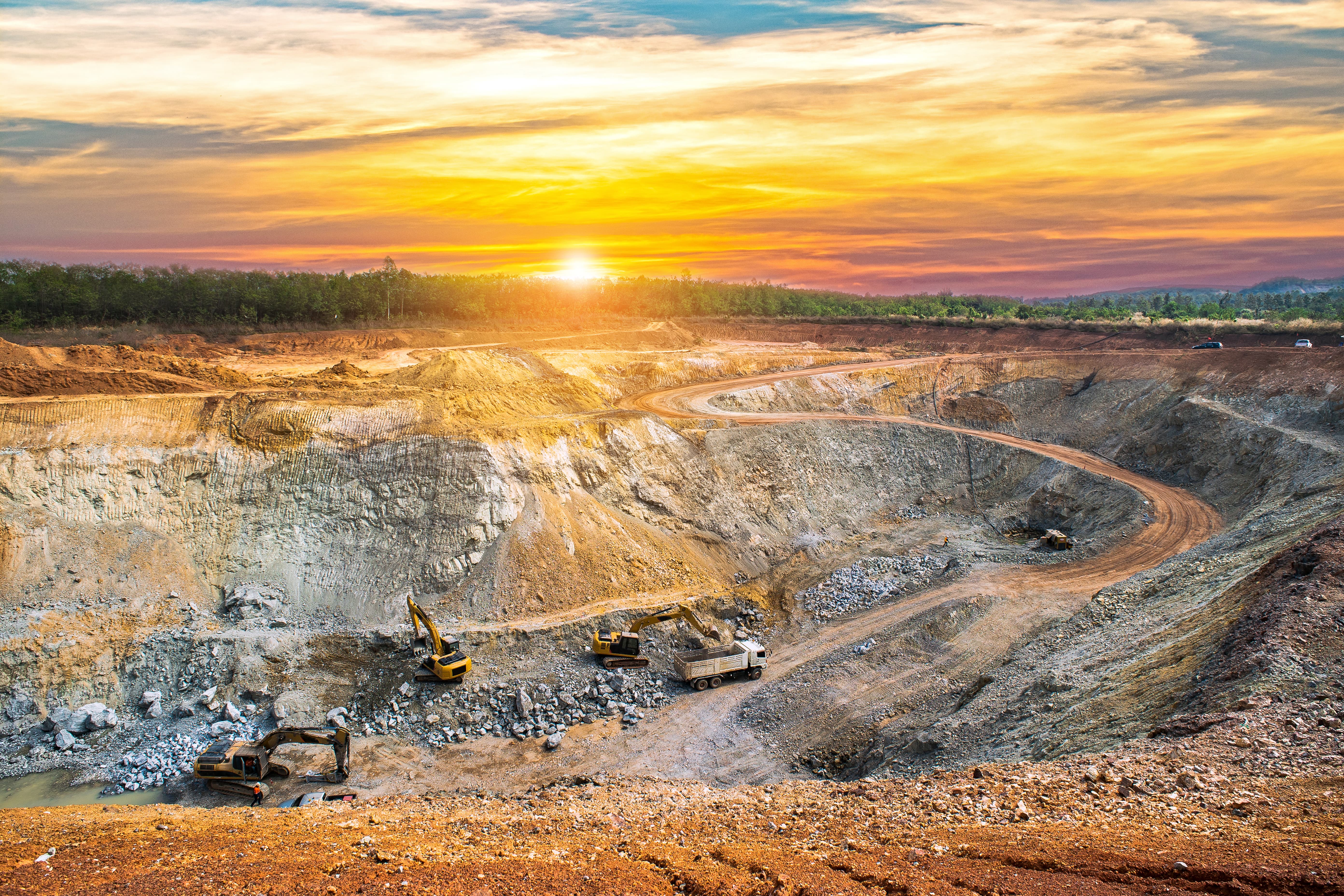Safe, Scalable, Voice-Led Comms for Large-Scale Mining Operations
Business Critical
Communication Range
The global mining industry runs at massive scale: industry databases track over 33,000 active mining sites, with roughly 7,900 large open-pit mines operating around the world (Source: GlobalData). Many of these large sites span dozens of square kilometers, employ hundreds to thousands of staff, and push constant material movement across haul roads, plants, and remote work fronts.
Large mines are not a single place but a collection of working scenarios: extraction benches that advance daily, processing plants that run 24/7, maintenance yards with heavy equipment, remote workshops for contractors, and long haul roads where fleets operate across kilometers.

Features of a Large Mine — a richer picture
Large mining sites combine scale, mobility, and harsh conditions:
Multi-zone footprint. Extraction, haulage, processing, and support areas are physically separated and often linked by long haul roads.
High personnel density & shifts. Hundreds or thousands of workers rotate across multiple shifts and contractor groups, increasing peak-hour voice demand.
Heavy vehicle fleets. Convoys of haul trucks, service vehicles, and fuel rigs require constant coordination and reliable in-cab radios.
Dynamic work fronts. Benches and drill locations move as the mine progresses, requiring networks that can be reconfigured and extended.
Harsh environment. Dust, vibration, extreme heat/cold, and electromagnetic interference are everyday realities that stress equipment and networks.
Each scenario has its own comms needs.
Mining communications are clearly moving toward broadband, automation, and data-rich operations—and that shift is transforming what modern sites can do. Yet even as mines add video, telemetry, and remote control, voice remains the guaranteed backbone that keeps people safe and operations running. Reliable push-to-talk, priority emergency calls, and low-latency location updates are non-negotiable: without them, high-bandwidth systems have no way to protect workers or coordinate fleets the moment minutes count.
Large mines must therefore design for both: a forward-looking path to LTE/5G-based automation, built on a rock-solid voice layer that never fails. That voice-first strategy reduces operational risk today while preserving upgrade routes for future broadband services.
Pain Points & Voice Communication Demands — made practical
Large mines face specific communication pain points that threaten safety and productivity:
Coverage gaps & capacity crunches. Vast areas and concurrent groups can create dead zones or overloaded channels during peak operations.
Handover & continuity. Vehicles and crews move between cells; dropped calls during handover can cause missed instructions or safety lapses.
Rugged hardware needs. Radios and base stations must resist dust, shock, and heat while delivering clear audio.
Dispatcher visibility & fleet control. Dispatchers need near-real-time location feeds and group call capabilities to coordinate convoys and respond to incidents.
Emergency priority & resilience. Systems must support preemptive emergency calls and survive core faults so rescue and command remain reachable.
Cost & maintainability. Deploying and running large networks must be cost-efficient and operable by site teams without huge maintenance overhead.
I've visited sites where a single dead zone delayed a fuel convoy for hours—simple voice coverage would have kept that truck moving and avoided costly downtime. These are exactly the problems a well-designed trunked voice backbone solves.
Hytera's Voice Communication Solution for Large Mines
For large sites, a trunked, voice-centric backbone—based on TETRA or DMR Trunking—is the most cost-effective, reliable approach. Both technologies are proven at scale for mission-critical voice and can be tailored to mining conditions.
Core design principles
Wide outdoor coverage: High-gain outdoor base stations, DS-6250S DMR Trunking Cube Base Station or DIB-R5 outdoor TETRA Base Station, placed to cover benches, haul routes, and processing zones minimize dead spots.
9Targeted indoor fill: Indoor base stations and repeaters, DIB-R5 Advanced TETRA Base Station or DS-6210 DMR Trunking Pro Base Station, ensure signal in control rooms, workshops, and plant buildings.
15Rugged terminals: Dustproof handhelds (HP7 series DMR portable radio or PT590 TETRA portable radio) and mobile truck kits provide reliable push-to-talk, emergency buttons, and GPS.
18Trunking intelligence: Trunked cores efficiently assign channels, support large user counts, offer priority/emergency preemption, and reduce the number of physical channels needed.
Location & logging: GPS-enabled radios feed dispatcher consoles with live locations and enable route playback for incident review.
Redundancy & resilience: Core redundancy and prioritized control channels keep critical voice alive during faults.
TETRA vs. DMR Trunking — practical fit
TETRA: Widely used for public-safety and large trunked deployments; ideal where regulatory support and spectrum exist for large capacity needs.
DMR Trunking: Offers a cost-effective trunked option for industrial users, with lower CapEx and strong interoperability for mixed-fleet sites.
Either can be configured with outdoor base stations, indoor units, mobile radios, and robust dispatcher consoles to meet your mine's operational profile.
Supporting automation without overspend
A trunked voice backbone is intentionally voice-first and cost-effective today, yet it can be designed for future integration. Gateways and bridges can connect trunking systems to dispatch software, SCADA, or an MCX/broadband network when the mine later adopts telemetry, remote-control, or higher-bandwidth services—letting you protect today's budget while preserving a clear upgrade path.
Closing Thoughts
For large mines, voice communication is the operational spine: it's essential for safety, fleet control, and uninterrupted production. By choosing a tailored trunked voice solution—TETRA or DMR—operators get a resilient, scalable, and economical backbone that meets today's needs and supports tomorrow's digital ambitions. Well-planned voice networks reduce downtime, speed emergency response, and create the stable platform that makes smarter, more automated mining possible.






